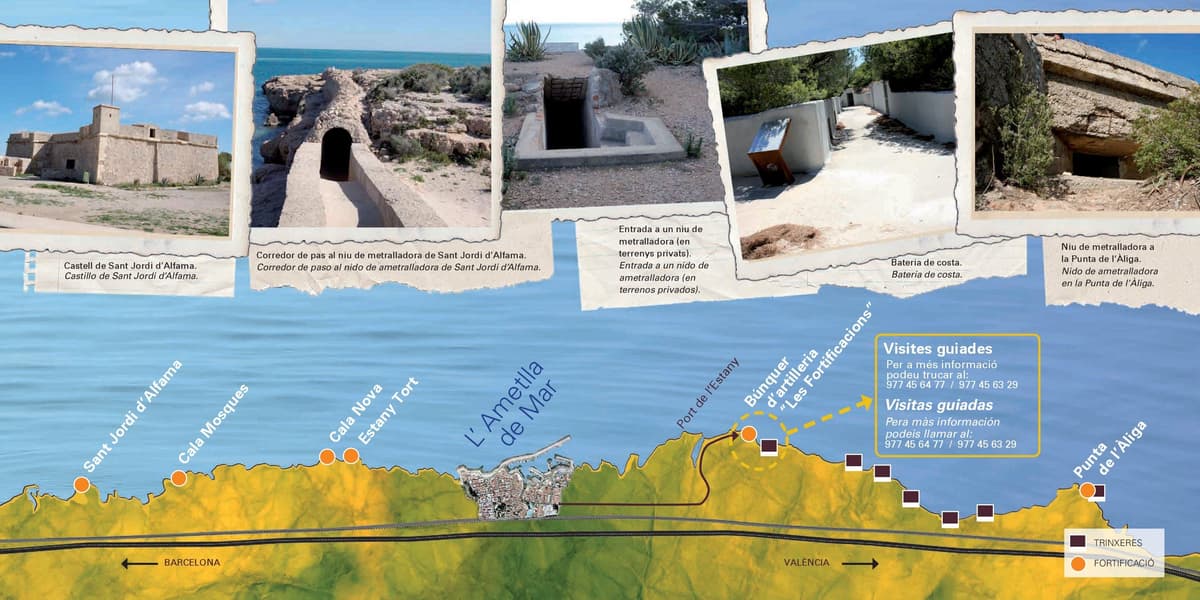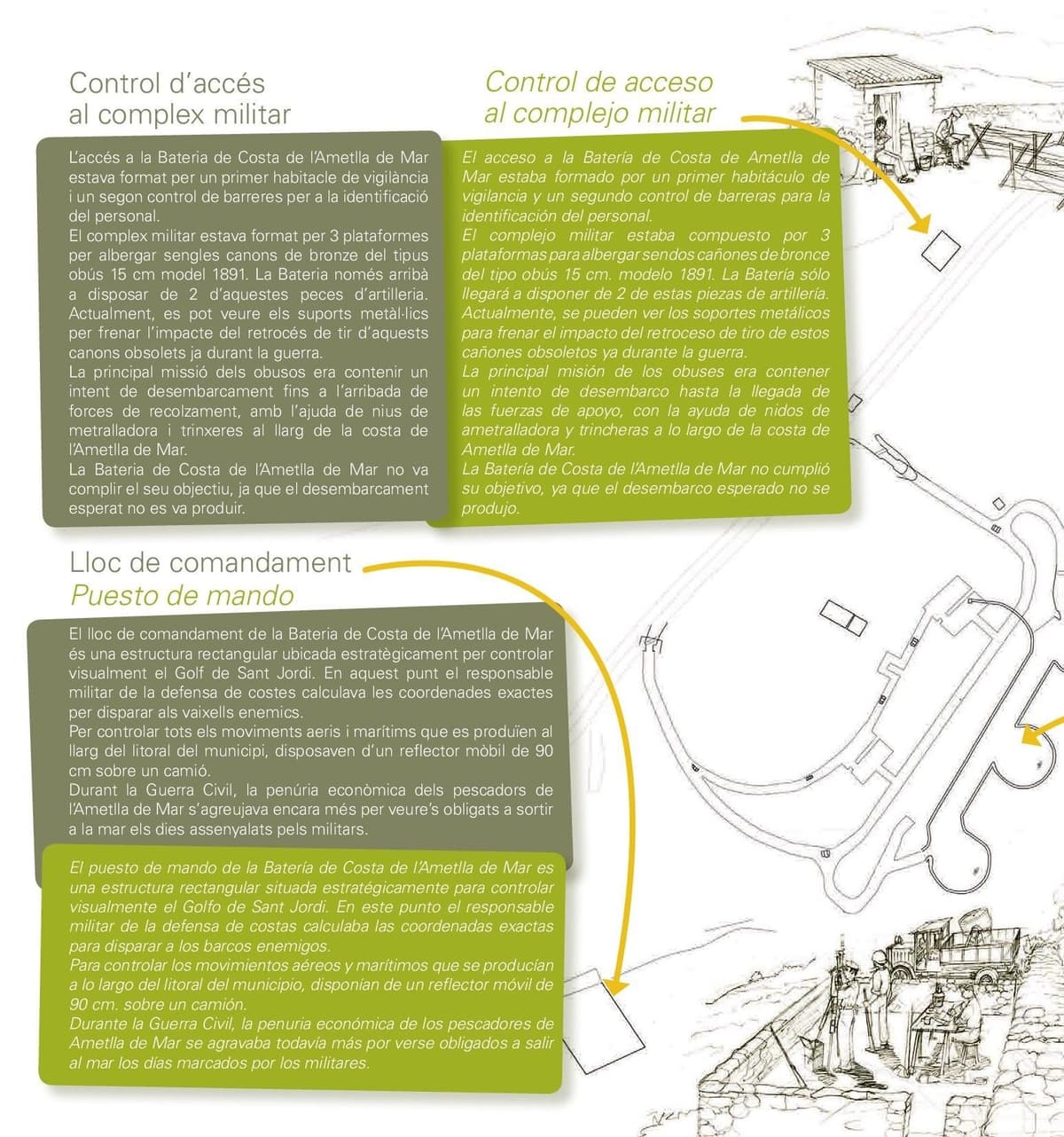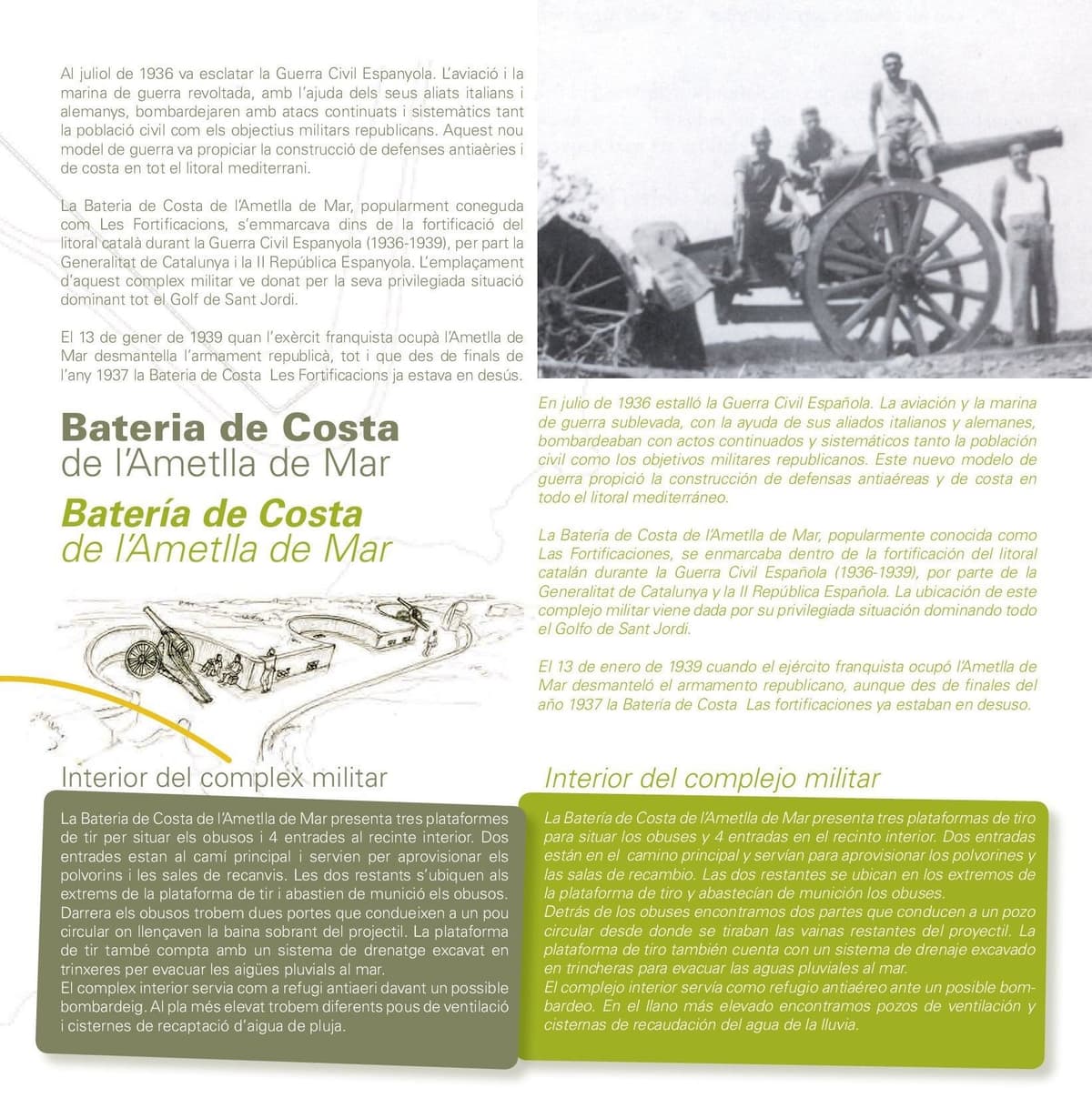L'Ametlla de Mar's fortifications
THE DEFENCE OF AMETLLA DE MAR’S COAST Like other municipalities, the coast of l’Ametlla de Mar was fortified during the Spanish Civil War. This was principally from 1937 onwards, which was when it was thought there could be a possible disembarkation from Mallorca by the Nationalists. Although this disembarkation never took place, the process of fortifying the coast continued whenever possible. Fortifications can still be found on the coast in Sant Jordi d’Alfama, Cala Mosques, Cala Nova, El Puerto de l’Estany and Punta de l’Aliga to name some of them. As can be seen, there are fortifications along the length of the coast of the municipality. Two of these are the most important. They are those found in Sant Jordi d’Alfama and in the Puerto de l’Estany and stand out largely due to their visibility and conservation. The case of Sant Jordi d’Alfama is evident because, apart from the spectacular machinegun emplacement located on the point, very near the sea, the ruins of two fortifications from very different periods are also located there. In the Puerto de l’Estany there is an artillery bunker for a battery of three cannons which consists of communicating passages and rooms that protected both the material and soldiers. These fortifications were usually built by work battalions that were sometimes helped by residents of the municipality where they were being constructed. The residents usually transported material or water and were paid ten pesetas a day. As well as the civilians and the work battalions who were constructing the fortifications, we must also add the military personnel, which would result in a huge movement of people throughout the area.
CONTROL OF ACCESSES TO THE MILITARY INSTALLATIONS The access to the coastal battery of Ametlla de Mar was made up of a watch room and a second control barrier used to identify the personnel. The military installations were made up of 3 platforms which were built to house three 15cm bronze howitzer cannons (model 1891). However, the battery never housed the three cannons it was designed for as only two of the three pieces of artillery were positioned there. The metal supports to curb the backward impact of these cannons, which were already obsolete during the war, can still be seen. The howitzers were positioned there to try to halt a possible invasion of the coast until reinforcements arrived. The cannons were backed up by machine-gun emplacements and trenches along the coast.
COMMAND SITE The command site of l’Ametlla de Mar’s coastal batteries is a rectangular structure that is strategically located so das to ensure that he whole of the Fulf of Sant Jordi could be controlled visually. The officer responsible for the coastal defence calculated the exact co-ordinates to shoot at enemy boats from this position. Air and maritime movements were controlled along the coast of the municipality by a 90cm mobile reflector that was placed on a lorry. The economical hardships of the fishermen of l’Ametlla de Mar were made even worse during the Civil War by the fact that they were obliged to work on the days stipulated by the military.
L’AMETLLA DE MAR’S COASTAL BATTERY The Spanish Civl War broke out in 1936. The air force and navy revolted and, with the help of their German and Italian allies, they systematically and continuously bombarded both the civilian population and Republican military objectives. This new method of war favored the construction of anti-air and coastal defenses along the entire Mediterranean coastline. L'Ametlla de Mar’s coastal battery, popularly known as Las Fortificaciones was set up on the Catalan coast during the Spanish Civil War (1936-1939) by the Generalitat de Catalunya (the Catalan government) and the 2nd Spanish Republic. The location of this military installation in such a privileged location means that it dominated the entire Gulf of Sant Jordi. L'Ametlla de Mar was occupied by the Nationalist army on the 13th of January 1939 and the Republican defenses were then dismantled. The coastal battery had, however, been abandoned since the end of 1937.
INSIDE THE MILITARY COMPLEX The battery on l’Ametlla de Mar’s coast has three shooting platforms to place the howitzers on and four entrances leading to the interior. Two of the entrances are located on the main road and were used to supply the magazines and store rooms. The two other entrances are located at either end of the shooting platform and were used to supply ammunition for the howitzers. There are two doors behind the howitzers. These lead to a circular well where the empty shells were deposited. The shooting platform also has a drainage system of trenches that emptied rain water into the sea. The interior of the installations was used as an air raid shelter if there was bombing. Ventilation shafts and fresh water cisterns are located on higher ground.








